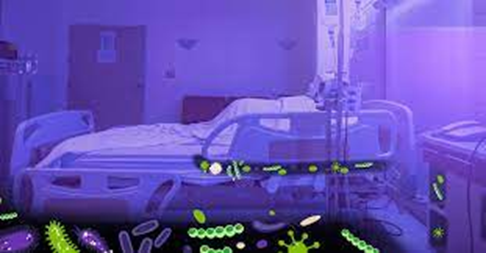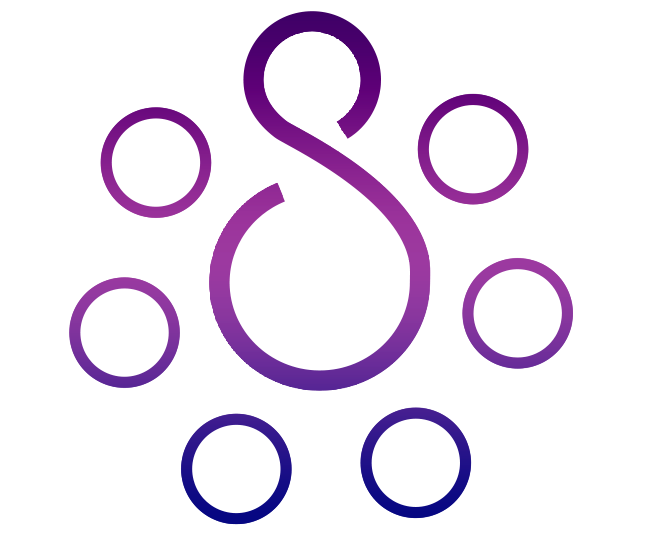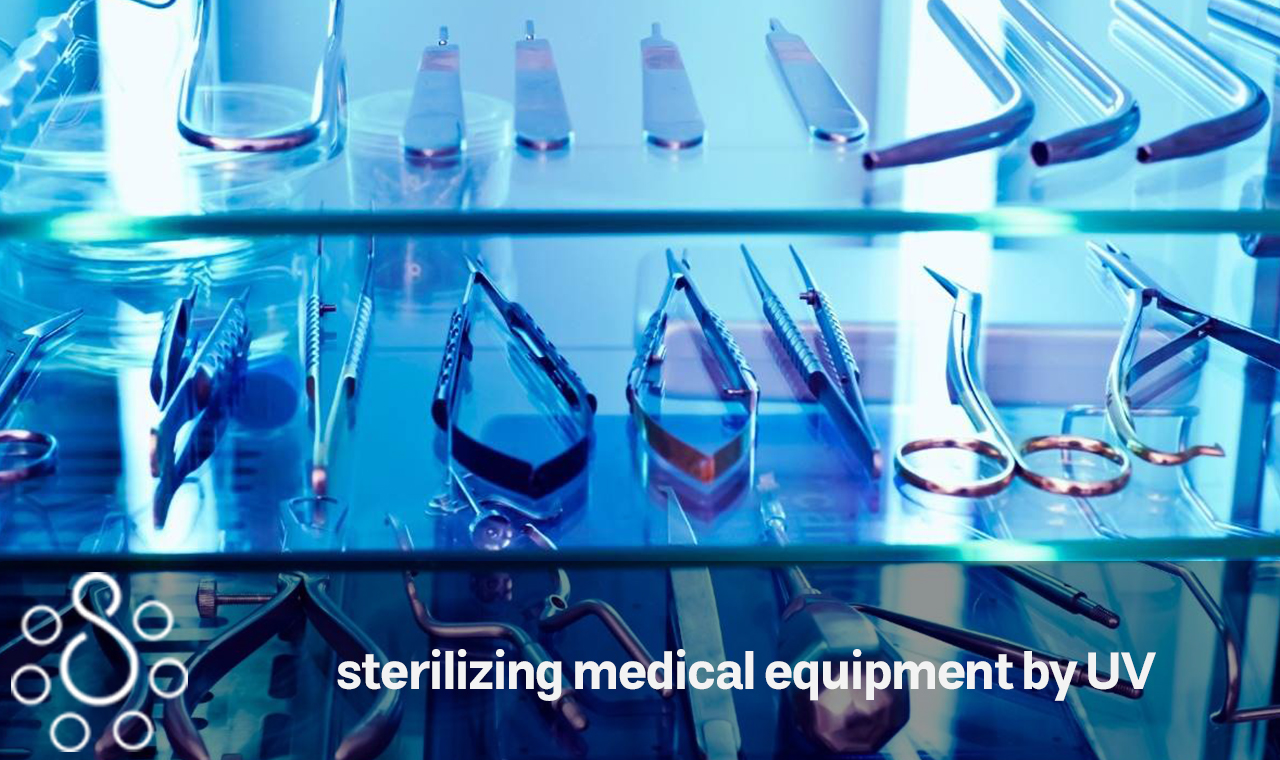What kinds of things would you take care of if you were a nurse? Various types of rooms include those for patients and those used for waiting, as well as bathrooms, nurse stations, break rooms, and so on. In each of these domains, what do you put your hands on and what do you make use of? A notebook computer, pencils, surgical materials, a smart phone, a stethoscope, a blood pressure cuff, scissors, patient beds, an identification card, keys, glasses, thermometers, and several other things When you go from patient to patient and from room to room at a hospital, what kinds of bacteria do you come into contact with? Salmonella, E. coli, SARS, H1N1, MRSA, and other bacteria and viruses, as well as fungus, have been linked to this outbreak. How exactly should one clean thing like personal items and medical equipment after coming into contact with them? There is the utilization of UV light. So, UV light cabinets clean medical instruments and personal belongings that you come into contact with, reducing the transmission of germs and bacteria. Here are the ways which apply for sterilizing medical equipment by UV. Follow us.
UV Lamps Have a Lot of Health Benefits.
UV radiation is measured in wavelengths that range from 100 nanometers (nm) to 380 nanometers and is broken up into three distinct regions: UVA (320–400 nm), UVB (280–320 nm), and UVC (100–280 nm) (nm). UVC is a kind of short-wave ultraviolet light that is emitted by the sun and is completely swallowed up by the ozone layer. UVA and UVB are the types of rays that are capable of reaching the earth’s surface. These rays are responsible for sunburn and also provide benefits to humans, such as vitamin D and a number of phototherapy treatments.
The expert engineers at LightSources are responsible for the design and engineering of UVC germicidal lamps. These lamps are created and constructed to generate 254 nm, which is the most effective wavelength for destroying viruses and bacteria. Ozone lamps with a wavelength of 185 nm are also efficient in a variety of sterilizing applications. UV lamps that generate UVA and UVB wavelengths are useful in phototherapy lamps since these wavelengths have been shown to be beneficial in treating a variety of medical ailments. So, sterilizing medical equipment by UV can be a good option.
Related Article: Differences between UVA, UVB, and UVC
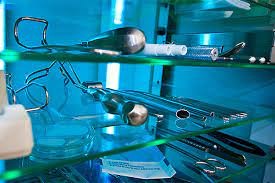
Two areas where UV lights provide several advantages:
UVC Germicidal Lamps – Because these lamps kill harmful viruses and bacteria in the air, water, and on surfaces, the healthcare industry, along with a great number of other fields, may significantly benefit from the utilization of UVC germicidal lamps. In addition, this may be the case for a great number of other fields as well.
Phototherapy Lamps with UV Light- In medical phototherapy, sometimes referred to as light therapy, UV lamps are one of the tools that are used. UV lamps are fabricated specifically for the purpose of medical phototherapy, which is used to treat a wide range of medical ailments. The creation of one-of-a-kind ultraviolet (UV) lamps for use in phototherapy and germicidal applications is an area in which both LightSources and LightTech have established themselves as market leaders. In addition to the exclusive lighting goods that they manufacture, these firms also offer cutting-edge technology and innovative solutions.
Sterilizing medical equipment by UV for germicidal purposes
The medical industry makes extensive use of germicidal UVC lamps because of their ability to provide superior sterilization in a number of settings. At medical facilities, doctor’s offices, and hospitals, as well as many public venues and corporate enterprises, germicidal lights are employed to prevent the spread of illness. When UVC germicidal lamps are inserted in HVAC systems or upper room air irradiation equipment, they clean the air to prevent airborne diseases. The use of germicidal lights is another option for eliminating dangerous germs found in water and on surfaces.
Hospitals sterilize both the operating equipment and the patient rooms themselves, as well as any surfaces that come into contact with patients. UVC robots are used in a great number of hospitals and other public areas because of their ability to eradicate harmful germs in a more efficient manner. It has been demonstrated that the use of ultraviolet-C (UVC) light, in conjunction with more traditional methods of cleaning, has the potential to eliminate superbugs such as bacteria resistant to antibiotics and significantly reduce the total number of viruses and bacteria that are present in an area. UV sterilization is used to assist promote health and welfare in a range of public venues, including businesses, schools, libraries, airports, bus stops, and even private residences. This helps prevent the spread of pathogens that might be harmful to people’s health.
UV radiation is used in a wide number of medical applications, including surface sterilization, water sterilization, and air sterilization systems, with the ultimate goal of enhancing patients’ health and well-being.
Related Article: How to use a UV sterilizer box
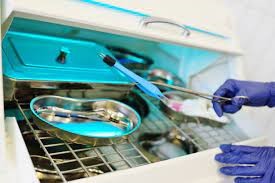
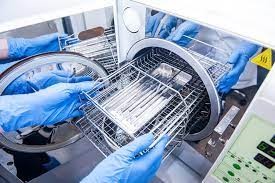
Phototherapy Lamps with UV Light for Medical Use
Medical phototherapy lamps are lamps that have been purposely designed to generate UVA, UVB, and narrowband UVB emissions. These lamps are intended to be used under the direction of a medical professional. Phototherapy using ultraviolet (UV) lamps is a successful treatment for a wide number of medical conditions, such as various skin conditions, psychiatric problems, and jaundice in newborns. Acne, eczema, psoriasis, and vitiligo are just a few of the skin conditions that may be efficiently treated with UV radiation. Therefore, sterilizing medical equipment by UV could be an alternative worth considering for phototherapy.
Acne vulgaris is the most common type of acne, affecting approximately 85 percent of teenagers in the United States. It is also the most common skin ailment. It has been shown that a combination of red and blue light is effective in treating acne, both in terms of avoiding new outbreaks of acne and in terms of easing the symptoms of acne that already exists. Blue light with a wavelength of 415 nm is effective in destroying bacteria and avoiding acne outbreaks, and red light with a wavelength of 600 to 700 nm stimulates cell regeneration, healing, and inflammation alleviation.
Related Article: Are UV sanitizers effective? What You Should Know Before Making One
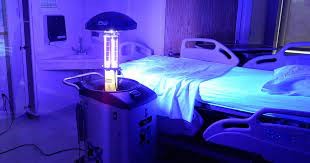
Eczema is a widespread skin disorder that affects more than 30 million Americans and comes in a variety of forms and symptoms. Eczema sufferers may have a variety of symptoms, including dry, rough, scaly, itchy, and inflammatory skin areas. Phototherapy lamps that emit UVA, UVB, and narrowband UVB have been shown to help alleviate eczema symptoms and prevent flare-ups.
Psoriasis is characterized by patches of dry, scaly, itchy skin that are punctuated by eruptions of raised, hardened lesions. Patients whose psoriasis symptoms are severe may benefit more from UV phototherapy lamps than from topical ointments, whereas those whose psoriasis symptoms are mild may benefit more from topical ointments.
Vitiligo is a skin disorder that is defined as an autoimmune disease in which the immune system kills the pigment-forming cells in the body, known as melanocytes, resulting in white spots on the skin. When used in combination with medication, a UVB phototherapy lamp for vitiligo is beneficial in restoring pigment to the white patches.
UV radiation has therapeutic applications for the treatment of a variety of skin conditions, as well as for the management of mood disorders, such as seasonal affective disorder (SAD).
UV Light for Depression: During the winter months, many people in the northern hemisphere suffer from seasonal depression. SAD symptoms are akin to nonseasonal depression symptoms, which may be severe and include social isolation, weight gain, tiredness, and a lack of interest in regular activities. Phototherapy lamps are the most effective sort of treatment for SAD as they help to combat symptoms as the days get shorter and less natural sunlight is accessible.
Neonatal jaundice is a disorder that causes yellowing of the skin and the whites of the eyes in infants when toxins build up in the body due to inadequate liver function. UV blue light treatment minimizes brain damage caused by high bilirubin levels in the blood and breaks down bilirubin into compounds that may be safely expelled via waste. For this reason, UV lamps used to cure jaundice are referred to as bili-lights.
related article: What Is a Toothbrush Sanitizer?
LightSources provides high-quality UV lamps for medical applications.
LightSources and LightTech have invented and constructed UV medical phototherapy lamps as well as UV germicidal lamps for medical purposes. Sterilizing medical equipment by UV lamps have great disinfection properties, and they are used to treat all of these conditions. Because of our extensive resources, which include the most advanced high-tech lamp designers and engineers in the world as well as a state-of-the-art glass plant located in Europe, we are able to provide the most effective and cost-effective solution for virtually any application that requires UV light for medical purposes.
